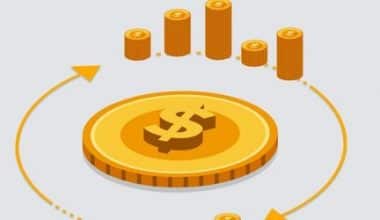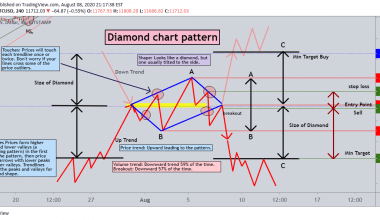A type of stock called preferred stock combines the features of bonds and equities. Like bonds, preferred shares pay dividends in cash and frequently offer better yields than bonds while being less risky than common stock. Preferred equity has particular characteristics that offer investors certain advantages, but it also has limitations that prospective buyers need to be aware of. In this post, you will learn how preferred stock functions, examples of it, and the distinction between preferred and common stock. Look at the preferred stock ETF list as well.
What is Preferred Stock?
Preferred stocks resemble a bond in many ways: It has a specified maturity date, a par value (or face value), pays a contractual dividend, and can be redeemed early (often after five years). Depending on the type (cumulative or non-cumulative), preferred stocks may be able to miss dividend payments, unlike bonds, and some may not even have a maturity date since they are eternal. Preferred stocks are occasionally, but not frequently, converted into common stock.
Understanding Preferred Stocks
Preferred shareholders receive dividend payments before common stockholders. Dividends can be paid monthly or three times a year, and they often pay out more than common stock. These dividends are frequently expressed as a percentage in the issuing description and can be fixed or set in terms of a benchmark interest rate like the London Interbank Offered Rate (LIBOR).
Participating shares can pay extra dividends that are based on the dividends paid on common stock or the company’s profits. Adjustable-rate shares list certain factors that affect the dividend yield. The board of directors of a firm has the discretion to decide whether to pay a dividend.
Preferred stockholders typically do not have voting rights, making them different from common stockholders, who do. Preferred equity is like a mix of debt and equity because it has fixed dividends, and its value can go up. Investors wanting consistency in anticipated future cash flows will find this appealing.
Common Stock Vs. Preferred Stock
The distinctions between preferred vs. common stock are numerous. The main difference is that people who own common stock usually get one vote per share, while people who own preferred stock usually don’t. More investors are familiar with common than preferred equity.
Preferred Stock vs. Common Stock
Although both preferred stocks vs. common stock are equity securities, they have specific vital differences. Due to the need to pay dividends to preferred shareholders first, preferred equity gets a set dividend. On the other hand, ordinary investors might not always get a dividend. Before paying any dividends to common stockholders, a firm may fully pay all preferred investors’ dividends (including from prior years).
The recurring cash dividends preferred stockholders get to give it its intrinsic value. On the other side, it is more challenging to evaluate a common stock. Investors hold common stock, however, because it is not reliant on semi-fixed payments in anticipation of possible capital growth.
Finally, the terms and circumstances for the two types of equity vary. Ordinary investors can vote, whereas preferred owners often do not. Shares of preferred stock may convert into common stock but not vice versa. Preferred shares might be callable, which means the business could seek to buy them back at par. Additionally, preferred equity is treated more favorably during liquidations.
Preferred Stock
- Company equity ownership
- Tradable on public exchanges (for public companies)
- Have the first right to dividends and must be paid before common stockholders
- Usually do not experience as much capital growth
- Usually not entitled to vote
- It might be convertible into common stock at the option’s discretion
- Is treated more favorably during liquidations
Common Stock
- Company equity ownership
- Tradeable on open markets (for public companies)
- No assurance that dividends will be paid; they must wait until preferred owners are fully compensated
- Frequently has higher capital appreciation
- Usually can vote
- They are not convertible into stock.
- Are treated poorly during liquidations
Preferred Stock vs. Bonds
Preferred stocks and bonds both provide regular dividends. Also, preferred stocks can pay a fixed dividend, just like bonds, but they can also pay a floating rate based on a benchmark interest rate. Payments on preferred equity are not tax deductible, in contrast to debt.
Like bonds, preferred equity is sold with a set “face value,” called the “par value.” This amount is the amount the issuer will reimburse the security’s owner when it is called or reaches maturity.
Preferred equity can be given out for as long as the company wants, unlike bonds, which may have an end date. Preferred stocks issued forever can pay dividends if the company is still in business, but the prospectus will tell you how to get your money back. Like bonds, preferred stock could have a call date that lets the company that issued the stock buy it back at a later date, even before it matures.
If interest rates drop below the yield on the stock, a corporation may call back the preferred stock, allowing them to reissue stock at lower yields. If they do this, investors will forfeit both the preferred equity and the income stream.
But one of the most critical differences between preferred equity and bonds is that dividend payments on preferred equity can be put off. The interest on a company’s bonds must be paid when due to avoid being deemed in default.
Preferred Stock Examples
Consider a business issuing a $1,000 par value of 7% preferred equity. The investor would then get a $17.50 quarterly payout or an annual dividend of $70. This stock trades at or near par value, behaving more like a bond. Investors seeking to make money may decide to purchase this security. The financial industry is the one that issues stock the most frequently, and it can be done so to raise funds.
Preferred Stock Examples
One of the biggest preferred stock issuers is the banking sector, which also includes well-preferred corporations. Examples of preferred stock are shown below:
- Allstate Insurance
- Goldman Sachs
- AT&T
- Bank of America
- Wells Fargo
- Citigroup
- J.P. Morgan Chase
Preferred is also provided by several different businesses, including insurance examples, utilities, and even real estate investment trusts (REITs) like Public Storage, Annaly Capital, and Vornado Realty.
Preferred Stock List
A list of preferred stock exchange-traded funds (ETFs) that trade in the United States is available; inverse and leveraged funds, as well as those with less than $50 million in assets under management (AUM), are not included. As of September 1, 2022, preferred equities, as represented by the S&P U.S. Preferred Index, underperformed the general market, with a total return of -15.2% compared to the S&P 500’s total return of -11.0%.
Based on performance over the past year, the Virtus InfraCap U.S. Preferred Stock ETF (PFFA) is the list of best-performing preferred stock ETFs. Here is the list of the best-preferred stock funds:
- SPDR® ICE Preferred Securities ETF
- iShares Preferred&Income Securities ETF
- JHancock Preferred Income ETF
- American Century Quality Preferred ETF
- VanEck Pref Secs ex Fincls ETF
- Virtus InfraCap US Preferred Stock ETF
- Global X SuperIncome™ Preferred ETF
- Preferred-Plus ETF
- Invesco Variable Rate Preferred ETF
- Invesco Preferred ETF
- Global X Variable Rate Preferred ETF
- Innovator S&P Investment Grade Prfrd ETF
Top Preferred Stock ETFs
We look at the top three preferred stock ETFs listed below. Except where otherwise noted, all figures below are as of September 1, 2022. Except in uncommon circumstances, such as when the cash part is exceptionally substantial, the top holdings mentioned for each ETF do not include cash holdings or assets acquired using proceeds from securities lending to concentrate on the funds’ investment strategy.
#1. Virtus InfraCap U.S. Preferred Stock ETF (PFFA)
- One-Year Performance: -7.8%
- Cost Ratio: 1.21 percent
- Dividend yield each year: 7.58%
- Average Daily Volume for the Past Three Months: 152,248
- Assets Under Management: $544.6 Million
- Date of Inception: May 15, 2018
- Virtus Investment Partners is the issuer.
PFFA invests in preferred securities of American businesses with more than $100 million in market capitalizations to generate current income and capital appreciation. The fund employs various quantitative, qualitative, and relative valuation measures and is actively managed. The preferred stocks that companies with high development potential or great value qualities issue are the main focus of PFFA.
#2. Global X SuperIncome Preferred ETF (SPFF)
- One-Year Performance: -9.4%
- Cost Ratio: 0.58 percent
- Dividend Yield Per Annum: 5.69%
- Three-Month Average Daily Volume: 80,469
- Assets Under Management: $204.6 million
- Inception Date: July 16, 2012
- Issuer: Mirae Asset Global Investments Co. Ltd.
The S&P Enhanced Yield North American Preferred Stock Index, which is made up of 50 of the highest-yielding preferred equities in North America, is what SPFF aims to follow. On July 31, 2022, financial companies made up more than 68% of the fund’s portfolio, with the remaining third made up of equities from the energy, utilities, and other sectors.
#3. VanEck Preferred Securities ex Financials ETF (PFXF)
- One-Year Performance: -10.7%
- Cost Ratio: 0.40 percent
- Dividend Yield Per Year: 4.82%
- Average Daily Volume over the Past Three Months: 278,692
- Assets Under Management: $1 billion
- Launched on July 16, 2012, issued by VanEck
PFXF keeps an eye on the performance of hybrid debt, preferred stock, and convertible preferred equity issued by nonfinancial businesses that are listed on U.S. exchanges. The index is calculated using the ICE Exchange-Listed Fixed and Adjustable Rate Non-Financial Preferred Securities Index. The ETF wants to give investors access to high-income opportunities by investing in preferred stock, which has historically given higher returns than typical stock and senior debt.
What do you mean by preferred stock?
Preferred stock is a particular type that doesn’t give you the right to vote but does pay dividends at set times. The stock is an investment with features of both common stock and bonds. It gives you a regular income and ownership of the company.
What is the difference between stock and preferred stock?
The main difference between preferred and common stock is that common stock gives stockholders voting rights, whereas stock does not. Preferred shareholders get dividends before common shareholders because they have a higher claim on the company’s income.
Why would you buy a preferred stock?
Preferred equity is appealing because it usually has higher fixed-income payments than bonds, but each share costs less to buy. Preferred stockholders get paid dividends and get more money from selling the company than common stockholders. As opposed to common stock, its price is typically more steady.
What is an example of a preferred stock?
Consider a company issuing $1,000 in par value 7% stock. The investor would then get a $17.50 quarterly payout or an annual dividend of $70. This stock trades at or near par value, behaving more like a bond.
Is a preferred stock a good idea?
As with other investments, the answer is based on your risk appetite and investment objectives. Preferred equity is a good option for investors seeking better returns than bonds and the possibility of bigger dividends than common shares.
Is preferred stock high-risk?
Preferred securities typically carry a high-interest rate risk or the chance that prices will decline as rates increase because they have long maturities or none.
Conclusion
Preferred equity, or preferred stock, may be preferable for investors looking to generate cash flow from their equity assets. This kind of equity investment means that you own a part of a company and that dividend payments come first. Although it comes with trade-offs, preferred equity is another way to buy a stake in a company.
Related Articles
- Stock Market Calculator: See how your Market can grow
- GOOD ETFS TO BUY: Best ETFs for 2022
- Banking and Finance: Why is it the most preferred career choice? (+ detailed guide)
- FINANCIAL REPORTING: All You Need to Know With Examples (+ Quick Easy Tools)
- Equity Capital Market (ECM): Detailed Guide with Example






